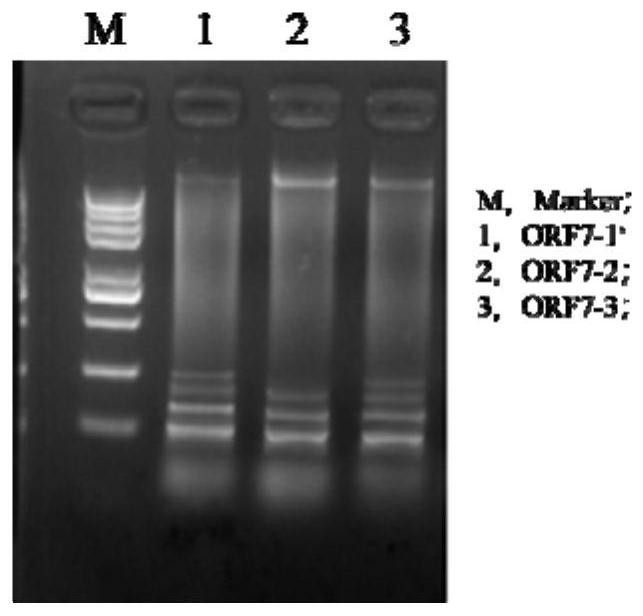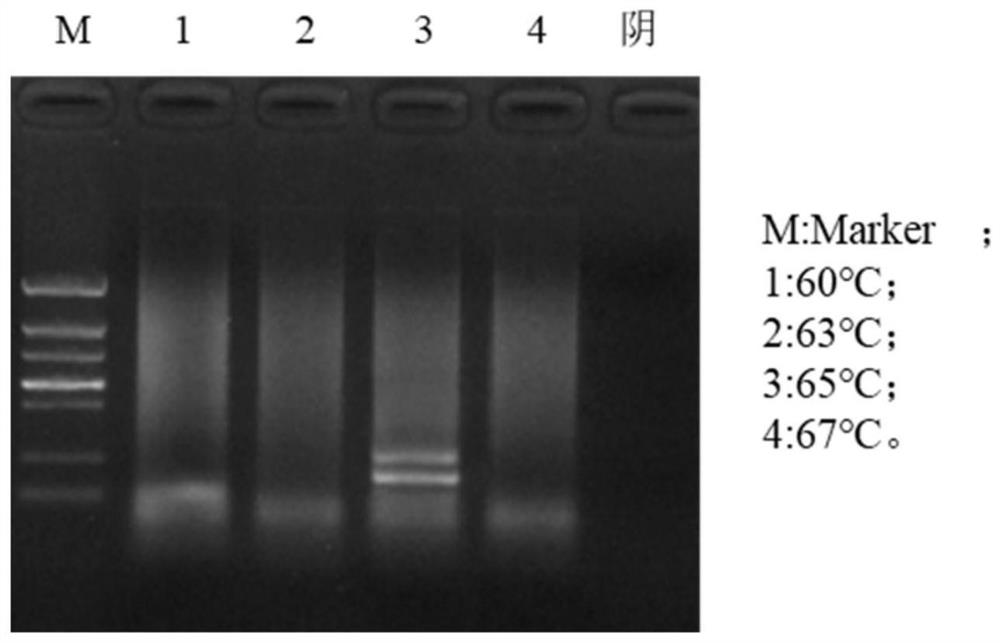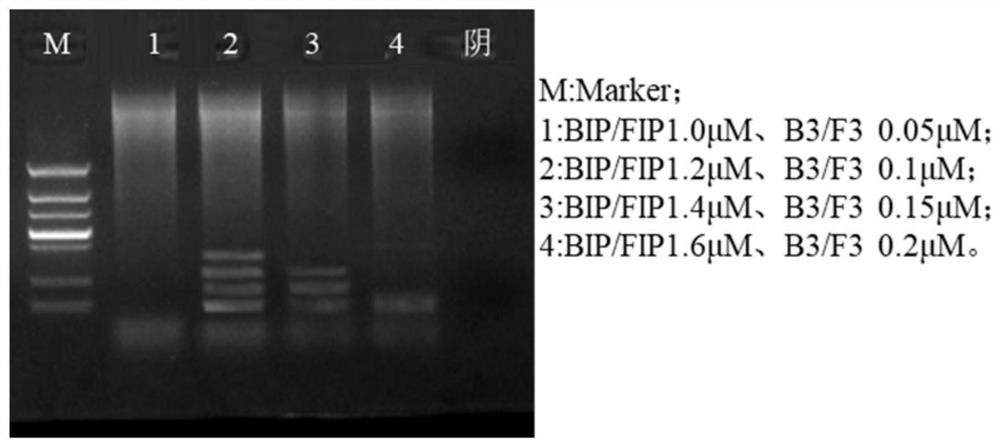Kit for detecting new coronavirus and detection method
A kit and virus technology, applied in the field of new coronavirus detection, can solve problems such as nucleic acid detection failure, and achieve the effect of reducing detection difficulty and improving detection efficiency
- Summary
- Abstract
- Description
- Claims
- Application Information
AI Technical Summary
Problems solved by technology
Method used
Image
Examples
Embodiment 1
[0067] The composition of the kit used to detect the new coronavirus is shown in Table 2:
[0068] Table 2
[0069]
[0070] The method of use of the kit is:
[0071] 1. Sample processing:
[0072] Take 2 μL of nucleic acid extract from nasal swab or throat swab, mix with 12.5 μL nucleic acid amplification enzyme and 0.5 μL fluorescent dye reagent, mix well and add to the microfluidic chip loading area. At the same time, take 2 μL of positive control and negative control reagents, mix them with nucleic acid amplification reagents and fluorescent dyes, add them to the chip plate loading area after mixing, seal the chip plate with parafilm, and remove air bubbles with a scraper.
[0073] 2. Detection:
[0074] Fix the packaged chip disc to the microfluidic isothermal amplification accounting analyzer, set the reaction program to 65°C and 60 minutes, and set the detection wells, positive control wells and negative control wells according to the order of sample addition. Af...
experiment example 1
[0075] Experimental Example 1: Primer Screening Test
[0076] Design isothermal amplification primers according to the ORF7b region with the lowest mutation rate on the new coronavirus, and the designed primers are shown in Table 3:
[0077] table 3
[0078]
[0079]
[0080] The primers were tested using common Taq enzymes, and the reaction system is shown in Table 4:
[0081] Table 4
[0082] Element Volume (μL) TaKaRa Ex Taq (5U / μl) 0.2 10×Ex Taq Buffer (20mM Mg 2+ plus)
2 dNTP (2.5mM each) 1.6 template 1 Primer 1 (10 μM) 1 Primer 2 (10 μM) 1 h 2 o
13.2
[0083] Reaction program: 98°C for 10s, 60°C for 15s, 72°C for 40s, 40cycle, 72°C for 5min, 4°C∞. Wherein, primer 1 and primer 2 represent a pair of upstream and downstream primers, including each pair of F3 and B3 primers or FIP and BIP primers.
[0084] The obtained experimental results are as figure 1 shown. Depend on figure 1 It can be seen t...
experiment example 2
[0086] Screening of Temperature Conditions in Isothermal Amplification Experiments
[0087] Set 4 gradients: 60°C, 63°C, 65°C, 67°C. According to the primer combination determined in Experimental Example 1 and the LAMP reaction system, the reaction solution was prepared for amplification. The LAMP isothermal amplification reaction system is shown in Table 5, and the reaction time was 60 minutes.
[0088] Table 5: LAMP isothermal amplification reaction system
[0089] Element volume WarmStart Multi-Purpose RT-LAMP 2X Master Mix(with UDG) 12.5μL Fluorescent dye (50×) 0.5μL template 2μL SEQ ID NO:3 (40μM) 0.8μL SEQ ID NO: 4 (40μM) 0.8μL SEQ ID NO: 1 (10μM) 0.4μL SEQ ID NO:2 (10μM) 0.4μL Supplement H 2 O to
[0090] Amplified products were identified by agarose gel electrophoresis, and the amplification results were as follows: figure 2 shown. Depend on figure 2 The results of agarose gel electrophoresis show...
PUM
 Login to View More
Login to View More Abstract
Description
Claims
Application Information
 Login to View More
Login to View More - R&D
- Intellectual Property
- Life Sciences
- Materials
- Tech Scout
- Unparalleled Data Quality
- Higher Quality Content
- 60% Fewer Hallucinations
Browse by: Latest US Patents, China's latest patents, Technical Efficacy Thesaurus, Application Domain, Technology Topic, Popular Technical Reports.
© 2025 PatSnap. All rights reserved.Legal|Privacy policy|Modern Slavery Act Transparency Statement|Sitemap|About US| Contact US: help@patsnap.com



